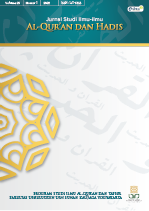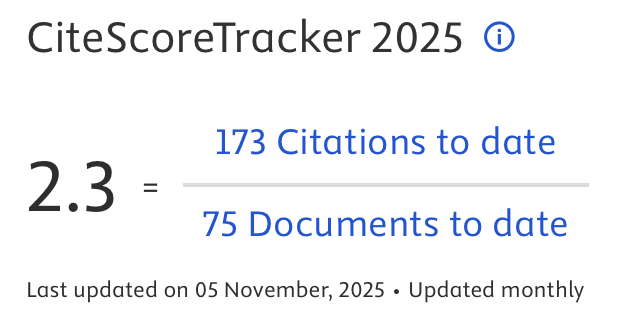Living Qur'an of Pesantren Women: A Manifestation of QS. An-Nisa 34 in A Woman Leadership Role of Nyai Munjidah Wahab
DOI:
https://doi.org/10.14421/qh.2022.2301-05Keywords:
Living Qur’an, Women Leader Pesantren, Nyai Munjidah Wahab, QS, An-Nisa, 34.Abstract
This article discusses the study of the living Qur'an of “women’s Pesantren” with a character study approach namely Nyai Munjidah Wahab. So far, women’s Pesantren have been stigmatized as a group of women who only act as “konco wingking”, and their scope of work is only in the domestic or internal area of the pesantren. The leadership of “women’s pesantren” is often considered as a "second class leader" because the main support for pesantren is the kyai or male figure. Nyai Munjidah Wahab gave a different color among the women’s Pesantren in general, by not only becoming the leader of her pesantren but entering the public sphere through organizational and political channels to become a regional head. With the living Qur'an method, this study aims to examine the religious reasoning that frames Nyai Munjidah's behavior on one side and see how Nyai Munjidah Wahab brings QS. An-Nisa: 34 to life in her thoughts and behavior both in her family, Pesantren and in her public leadership. The Living Qur'an of “women’s Pesantren” is analyzed using a gender and cultural perspective. Data collection techniques using observation and interviews. The results of this study indicate that the forms of Nyai Munjidah Wahab's living Qur'an are manifested in several forms of culture, both cognitive and non-cognitive cultures as well as performative and informative cultures that are thick with the values of gender equality. From a cultural perspective, Nyai Munjidah's living Qur'an is a form of active and passive cultural adaptation carried out by Nyai Munjidah Wahab as a “woman’s Pesantren”.
 Abstract viewed: 1017 times
|
Abstract viewed: 1017 times
|
 PDF downloaded = 726 times
PDF downloaded = 726 times
References
Abdullah, Muh. “Gender Bias in the Pesantren Literature (A Case Study on Uqudulujjain Text).” Advanced Science Letters 23, no. 10 (2017).
Agus Salim Syukran, Agus Salim Syukran. “Fungsi Al-Qur’an Bagi Manusia.” Al-I’jaz : Jurnal Studi Al-Qur’an, Falsafah Dan Keislaman 1, no. 2 (2019): 90–108. https://doi.org/10.53563/ai.v1i2.21.
Ahimsa-Putra, Heddy Shri. “The Living Al-Qur’an: Beberapa Perspektif Antropologi.” Walisongo: Jurnal Penelitian Sosial Keagamaan 20, no. 1 (2012): 235. https://doi.org/10.21580/ws.20.1.198.
Aida Husna. “Manajemen Pesantren Responsif Gender : Studi Anbalisis Di Kepemimpinan Nyai Pesantren Di Kabupaten Pati.” Palastren 7, no. 2 (2014): 445–56.
Arifa’illah, Imam Huda Syaiful. “Bentuk-Bentuk Adaptasi Masyarakat Dalam Menghadapi Bencana Banjir (Studi Kasus Di Desa Pelangwot Kecamatan Laren Lamongan).” Upaya Pengurangan Risiko Bencana Terkait Perubahan Iklim, no. 4 (2016): 299–314.
Awwaliyah, Neny Muthi’atul. “Potret Budaya Hadidan: Etos Keagamaan Dalam Kultur Living Qur’an Studi Di PA. Darul Hadlanah Kota Salatiga.” Diya Al-Afkar: Jurnal Studi Al-Quran Dan Al-Hadits 7, no. 02 (2019): 323. https://doi.org/10.24235/diyaafkar.v7i02.5804.
Chusniyah, Siti, and Moh Yasir Alimi. “Nyai Dadah : The Elasticity of Gender Roles and Life History of Pesantren Woman Leader.” Komunitas: International Journal of Indonesian Society and Culture 7, no. 1 (2015): 112–17.https://doi.org/10.15294/komunitas.v7i1.3602.
Dhofier, Zamakhsyari, Tradisi Pesantren; Studi Pandangan Hidup Kiai dan visinya mengenai masa depan Indonesia, (Jakarta: LP3ES, 2011)
Fadilah, Fida. “Konsep Kesetaraan Gender Dalam Pandangan Santri,” 2015, 1–27.
Fauzi, Muhammad Latif. “The Roles of Kyai and Pesantren in Preserving Islamic Tradition and Negotiating Modernity.” Journal of Indonesia Islam 06, no. 01 (2012): 125–144.
Gazali, Hatim, and Abd. Malik. “Pesantren and the Freedom of Thinking: Study of Ma‘had Aly Pesantren Sukorejo Situbondo, East Java, Indonesia.” Al-Jami’ah: Journal of Islamic Studies 47, no. 2 (2009): 295–316.
Hasbillah, Ahmad ‘Ubaidi, Ilmu Living Qur’an-Hadits : Ontologi, Epistemologi dan Aksiologi, (Banten : Maktabah Darus-Sunnah, 2019)
Isbah, M. Falikul. “Pesantren in the Changing Indonesian Context: History and Current Developments.” Qudus International Journal of Islamic Studies 8, no. 1 (2020): 65–106.
Latifah, Nur, and Asep Supena. “Analisis Attention Siswa Sekolah Dasar Dalam Pembelajaran Jarak Jauh Di Masa Pandemi Covid-19.” Jurnal Basicedu 5, no. 3 (2021): 1175–82. https://doi.org/10.31004/basicedu.v5i3.887.
Marhumah. “Konstruksi Gender, Hegemoni Kekuasaan, Dan Lembaga Pendidikan.” KARSA, no. June 2007 (1991): 477–84. https://doi.org/10.1144/GSL.MEM.1991.014.01.59.
Marhumah, Marhumah. “The Roots of Gender Bias: Misogynist Hadiths in Pesantrens.” Indonesian Journal of Islam and Muslim Societies 5, no. 2 (2015): 283. https://doi.org/10.18326/ijims.v5i2.283-304.
Mas’udi, Masdar F, “Perempuan di antara Lembaran Kitab Kuning” dalam “Membincang Feminisme Diskursus gender prespektif Islam” (Surabaya: Risalah Gusti, 2006)
Muhammad, Hussein, Perempuan Islam dan Negara, (Yogyakarta : Qalam Nusantara, 2016)
Muhammad, Hussein, Fiqh Perempuan : Refleksi Kyai atas Tafsir wacana Agama dan Gender, (Yogyakarta, IRCIsod, 2019)
Muhtador, M. “Otoritas Keagamaan Perempuan (Studi Atas Fatwa-Fatwa Perempuan Di Pesantren Kauman Jekulo Kudus).” Kafaah: Journal of Gender Studies 10, no. 1 (2020): 39–50. http://kafaah.org/index.php/kafaah/article/view/267.
Muzayanah, Iklilah. “Aku Adalah Perempuan Pesantren.” Antropologi Indonesia 32, no. Januari-April (2011): 57–65.
Nielsen, Richard A. “Women’s Authority in Patriarchal Social Movements: The Case of Female Salafi Preachers.” American Journal of Political Science 64, no. 1 (2020).
Nurish, Amanah. “Women’s Same-Sex Relations in Indonesian Pesantren.” Gender, Technology and Development 14, no. 2 (2010).
Prasetiawan, Ahmad Yusuf, and Lis Safitri. “Kepemimpinan Perempuan Dalam Pesantren.” YINYANG: Jurnal Studi Islam, Gender Dan Anak 14, no. 1 (2019): 39–69. https://doi.org/10.24090/yinyang.V14.
Purwanto, Tinggal. “Fenomena Living Al-Qur’an Dalam Perspektif Neal Robinson, Farid Esack Dan Abdullah Saeed.” Mawa’Izh: Jurnal Dakwah Dan Pengembangan Sosial Kemanusiaan 7, no. 1 (2016): 103–24. https://doi.org/10.32923/maw.v7i1.607.
Robinson, Neal, Discovering The Qur’an : a Countemporary aprouch to a veiled text, (London : SCM Press, 2003)
Rofik, Ainur, dkk. Tambak Beras : Menelisik Sejarah, Memetik Uswah, (Jombang : Pustaka bahrul Ulum, 2019)
Sadewa, Ubaidillah, KH.Abdul Wahab Chasbullah : Pahlawan Nasional Dari Pesantren Untuk Indonesia, (Jombang : Lingkar Muda Nusantara, 2011)
Saeed, Abdullah, The Qur’an an Introduction, (New York : Routledge, 2008)
Spradley, James P, Metode Etnografi, terj. Misbah Zulfa ELizabeth (Yogyakarta : Tiara Wacana, 1997)
Srimulyani, Eka. “ Muslim Women and Education in Indonesia: The Pondok Pesantren Experience .” Asia Pacific Journal of Education 27, no. 1 (2007).
Syamsudin, Sahiron, “Ranah-ranah penelitian dalam Studi al-Qur’an dan Haditst”, dalam Metode Penelitian Living Qur’an dan Haditst, ed. M.Mansyur dkk., (Yogyakarta : Teras, 2007)
Umar, Nasaruddin, Ketika Fikih Membela Perempuan, (Jakarta : Media Komputindo, 2014)
Wahyuni, Sri dan Arifin, Zainal. “Kepemimpinan Demokratis Nyai Dalam Pengembangan Pondok Pesantren.” Journal Of Management in Education 1, no. 1 (2016): 53–62.
Zarkasyi, Hamid Fahmy. “Imam Zarkasyi ’ S Modernization of Pesantren in Indonesia.” Qudus International Journal of Islamic Studies (QIJIS) 8, no. 1 (2020): 161–200.
Downloads
Published
How to Cite
Issue
Section
License
Publishing your paper with Jurnal Studi Ilmu-ilmu al-Qur'an dan Hadis means that the author or authors retain the copyright in the paper. Jurnal Studi Ilmu-ilmu al-Qur'an dan Hadis uses license CC-BY-NC-ND or an equivalent license as the optimal license for the publication, distribution, use, and reuse of scholarly works. This license permits anyone to copy and redistribute the material in any medium or format and must give appropriate credit, provide a link to the license, and indicate if changes were made. If you remix, translate, transform or build upon the material you may use it for private use only and not for distribution. Jurnal Studi Ilmu-ilmu al-Qur'an dan Hadis granted an exclusive non-commercial reuse license by the author(s), but the author(s) are able to put the paper onto a website, distribute it to colleagues, give it to students, use it in your thesis, etc, so long as the use is not directed at a commercial advantage or toward private monetary gain. The author(s) can reuse the figures and tables and other information contained in their paper published by Jurnal Studi Ilmu-ilmu al-Qur'an dan Hadis in future papers or work without having to ask anyone for permission, provided that the figures, tables, or other information that is included in the new paper or work properly references the published paper as the source of the figures, tables or other information, and the new paper or work is not direct at a private monetary gain or commercial advantage.
Jurnal Studi Ilmu-ilmu al-Qur'an dan Hadis journal Open Acces articles are distrubuted under the Creative Commons Attribution-NonCommercial-NoDerivatives 4.0 International (CC BY-NC-ND 4.0). Article can be read, copy and redistribute the material ini any medium or format under the following conditions:
Attribution — You must give appropriate credit, provide a link to the license, and indicate if changes were made. You may do so in any reasonable manner, but not in any way that suggests the licensor endorses you or your use.
NonCommercial — You may not use the material for commercial purposes.
NoDerivatives — If you remix, transform, or build upon the material, you may not distribute the modified material.










